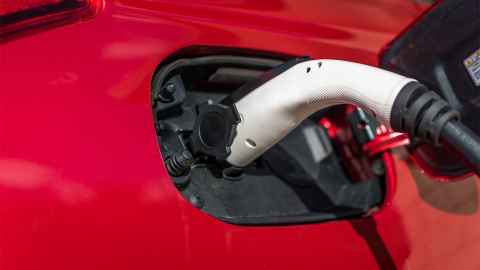EV revision a reality check, not a back-down
16 October 2019
Opinion: Is the Government going soft on its so-called Electric Vehicles pledge? Basil Sharp doesn't think so and explains why the fleet target was never feasible.

Labour and New Zealand First set an ambitious target for the Government’s fleet which was, where practicable, to be emissions-free by 2025/26. A recent posting of the pathway to achieving the 2050 emission targets shows all new government vehicles to be fully electric by 2026.
The difference is obvious and has drawn criticism from those seeing government going soft on its earlier commitment. Not so, because the wording of the coalition agreement is conditional. Rightly so, because it depends on whether it is practical. Consider the real challenge. There are more than 15,000 vehicles in the government fleet. Average emissions have gone down, total emissions have increased and less than 1 percent of the fleet is electric.
The transport needs of agencies falling under government’s directive - requiring vehicles with CO2 emission profiles that are 20 percent below their current fleet average - are wide-ranging. As are average emissions. To illustrate: The Department of Conservation has more than 700 vehicles, and reports average emissions of 203 gm/km. New Zealand Police have 3152 vehicles with an average emission profile of 197 gm/km. Emissions are roughly the same, but I would expect differences in fleet composition. The Ministry of Business, Innovation and Employment ranks these agencies within the high emissions group. The Ministry of Education, for example, falls within the low emissions group, with 565 vehicles and an average emissions profile of 143 mg/km.
There are clear differences in existing fleet composition and agency transport needs. Some require larger vehicles for off-road use, probably diesel-powered; others, light vehicles for urban transport. Some operate in remote areas, without access to charging infrastructure. And, of course, there will be transport suited to dealing with emergencies. Heavy vehicles used to fight fires must remain on standby to respond to emergencies. Police will need to respond to emergencies without range anxiety.
The demand for transport services derives from societal demand. We want the Department of Conservation to access remote areas for ensuring wildlife protection – they need off-road vehicles to do this. We don’t need the Ministry of Education to visit schools in heavy diesel-powered trucks, light vehicles are appropriate. Ideally, each agency fleet profile should match the needs of the community it serves. And, if possible, using low emission technology. In my opinion, electrification of the fleet is not feasible by 2026 and I suspect the target of all new vehicles to be electric is also not feasible.
I don’t see the Government backing away from the position outlined in the coalition agreement. Rather it is facing the realities - practicalities - of decarbonising transport. There is a broader message here. First, the Government has a deep pocket. But common sense suggests that a dollar spent on electric vehicles means a dollar not spent on health, for example. Now bring this down to the household budget. Many would like to buy an EV but can’t afford it. The mortgage, food, education etc. come first. So we have a fleet of light vehicles with an average age of 12 years. Transition to electrification will take many years. New Zealand relies entirely on importing vehicle innovations.
Second, investment in the infrastructure needed to support emission-free transport is in its infancy. Innovative retail outlets are providing charging facilities. Homes, too will require a charging facility. Government EVs are also reliant on charging infrastructure. But this is only electricity and there is no commercial substitute yet for heavy, diesel-powered vehicles. Hydrogen is on the horizon but is not yet a commercial reality. Third, low carbon transport requires electricity. To date, there has been little discussion on how the increase in electricity demand will be met. Prices must rise as more expensive sources are brought into supply. The potential is there but it comes at a price.
Is the Government going soft on its so-called pledge? I don’t think so. It is facing the realities and practicalities of transition. Should it be leading by example? Yes, because this is consistent with the coalition’s agreement. But I see little connection between its actions and the potential uplift of EVs by private car owners. Individuals will decide based on their particular situation. It is worth noting that the Government is not alone in requiring agencies to invest in low carbon transport, many commercial entities are also adding EVs to their fleet.
Newsroom is powered by the generosity of readers like you, who support our mission to produce fearless, independent and provocative journalism.Become a Supporter
Basil Sharp is Energy Education Trust of New Zealand Professor of Energy & Resource Economics, and Director of The Energy Centre, at the Business School.
This article reflects the opinion of the author and not necessarily the views of the University of Auckland.
Used with permission from Newsroom EV revision a reality check, not a back-down 16 October 2019.
Media queries
Alison Sims | Research Communications Editor
DDI 09 923 4953
Mob 021 249 0089
Email alison.sims@auckland.ac.nz